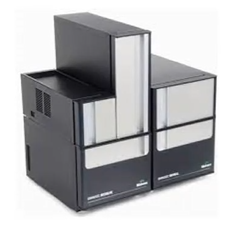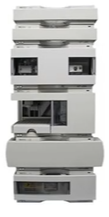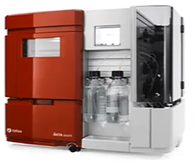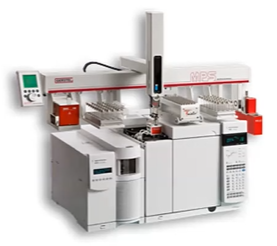Platforms and facilities
RESEARCH AT INAF
PLATFORMS AND FACILITIES
An Array of Specialized Equipment and Cutting-Edge Facilities
at Your Disposal!
Our laboratory services are driven by a team of research professionals having an extensive background to develop protocols and analyses appropriate for our members’ diverse needs. Our teams work with you, providing the level of autonomy you desire, whether it involves taking complete charge of your protocol or training members of your research team on specified equipment.
ANALYTICAL PLATFORM
Valuing products through detailed knowledge of their composition
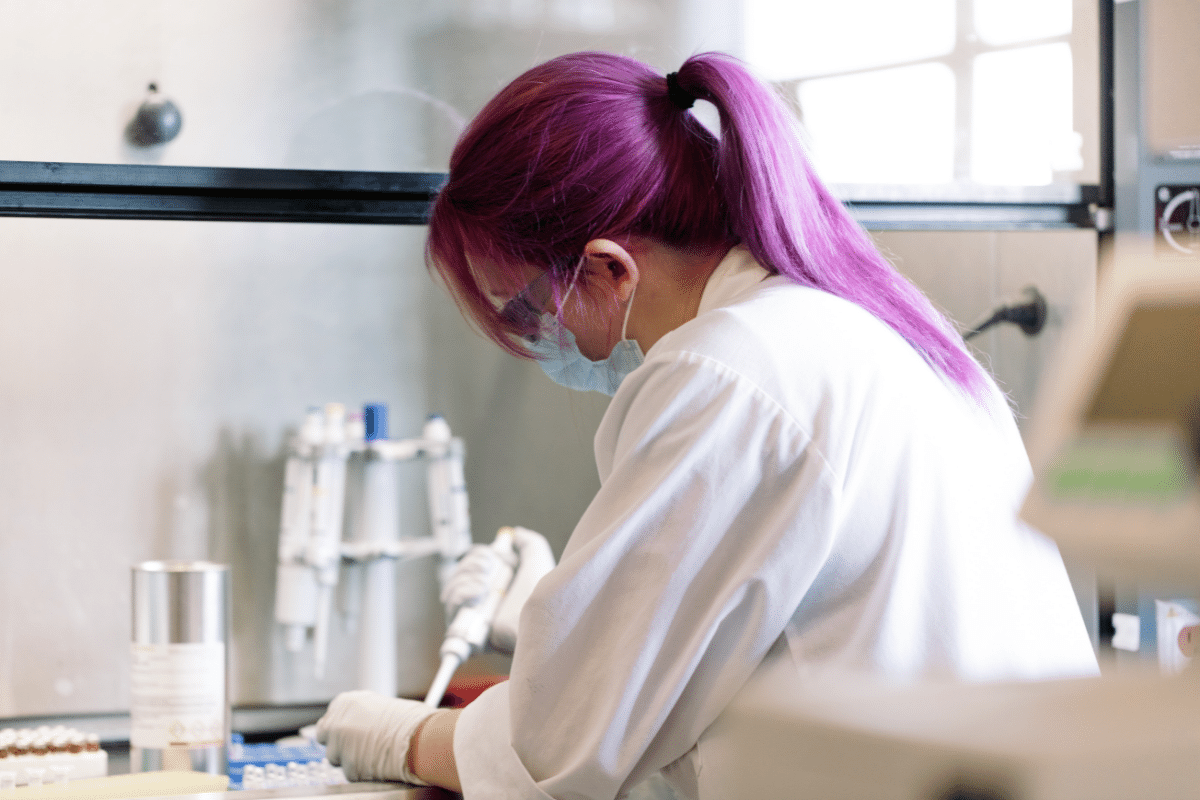
The analytical chemistry services for foods are based on a set of equipment allowing the characterization and quantification of a wide range of functional and bioactive molecules from various food matrices. Whether it is sugars, proteins, lipids, organic acids or polyphenols, several molecules of interest can be analyzed by INAF experts.
In addition to molecules of food origin, the analytical chemistry platform is also recognized for the analysis of various biological samples (urine, plasma, tissues, feces) in order to validate the effect of the consumption of specific foods on metabolic functions and consumer health. Since 2016, this service has helped some fifty Quebec and Canadian industrialists to better characterize their products in order to develop scientifically validated products that stand out on the market. At the academic level, its highly qualified personnel participate in over 100 project each year.
Services

- Total polyphenols (Folin-Ciocalteu) by spectrophotometry
- Polyphenol profile by UHPLC-MS/MS
- Total proanthocyanidins (DMAC) by spectrophotometry
- Proanthocyanidin profile by HPLC with a fluorescence detector (FLD)
- Total anthocyanins (pH difference) by spectrophotometry
- Anthocyanin profile by HPLC with a UV detector (DAD)
- Antioxidant capacity (HORAC) by fluorometry
- Sugar profile by HPLC with a refractive index detector (RID)
- Organic acid profile by HPLC with a refractive index detector (RID)
- Organic acid profile by HPLC with a UV detector (DAD)
- Volatile fatty acid profile by GC with a flame ionization detector (FID)
Equipment

Ion chromatograph
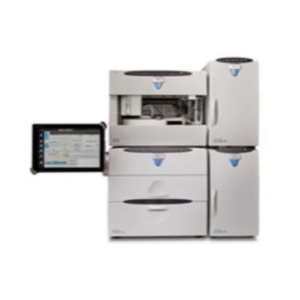
Gas chromatograph – flame ionization detector (GC-FID)
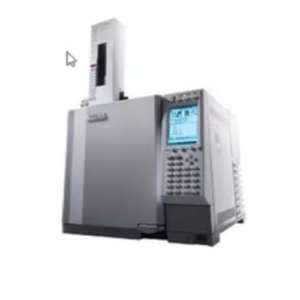
Liquid chromatograph – UV detector, fluorescence detector, and refractive index detector (HPLC-DAD-FLD-RID)
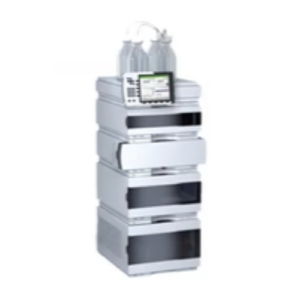
Differential scanning calorimeter
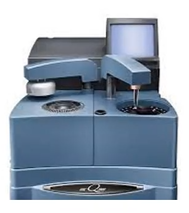
Gel permeation chromatograph/steric exclusion chromatograph (OMNISEC)
Liquid chromatograph – UV detector, refractive index detector and evaporative light scattering detector (HPLC-UV-RID-ELSD)
Fast protein liquid chromatograph (FPLC)
Gas chromatograph-mass spectrometer – flame ionization detector (GC-MS-FID)
Delivered Projects

Examples of projects being carried out:
- Measuring antioxidants in juices made from small-sized fruits to optimize the fortification parameters of a specialized beverage for a company
- Measuring several bioactive molecules in broccoli grown in different ways to establish the most optimal cultivation methods to improve their nutritive value
- Verifying the bioavailability of antioxidant molecules in blood plasma and tissues after consumption of health ingredients
Additional references :
- Lessard-Lord, Jacob, Charlène Roussel, Valérie Guay, and Yves Desjardins. Characterization of the Interindividual Variability Associated with the Microbial Metabolism of (−)-Epicatechin. Journal of Agricultural and Food Chemistry 71, no. 37 (2023): 13814-13827.
- Forteza, Fabiola, Isabelle Bourdeau-Julien, Guillaume Q. Nguyen, Fredy Alexander Guevara Agudelo, Gabrielle Rochefort, Lydiane Parent, Volatiana Rakotoarivelo et al. Influence of diet on acute endocannabinoidome mediator levels post exercise in active women, a crossover randomized study. Scientific Reports 12, no. 1 (2022): 8568.
- Lajoie, Camille, Alain Doyen, Perrine Feutry, Diane Gagnon, and Guillaume Brisson. Impact of emulsifiers for the nanoencapsulation with maltodextrin of cannabis oil by spray drying on the physicochemical properties and bioaccessibility of cannabinoids. Food & Function 13, no. 19 (2022): 10320-10332.
- Daniel, Noëmie, Renato Tadeu Nachbar, Thi Thu Trang Tran, Adia Ouellette, Thibault Vincent Varin, Aurélie Cotillard, Laurent Quinquis et al. Gut microbiota and fermentation-derived branched chain hydroxy acids mediate health benefits of yogurt consumption in obese mice. Nature Communications 13, no. 1 (2022): 1343.
- Laurent Bazinet, Sylène Brianceau, Pascal Dubé, Yves Desjardins, Evolution of cranberry juice physico-chemical parameters during phenolic antioxidant enrichment by electrodialysis with filtration membrane, Separation and Purification Technology, Volume 87, 5 March 2012, Pages 31-39.
- Chay Pak Ting, B.P.; Mine, Y.; Juneja, L.R.; Okubo, T.; Gauthier, S.F.; Pouliot, Y. Comparative Composition and Antioxidant Activity of Peptide Fractions Obtained by Ultrafiltration of Egg Yolk Protein Enzymatic Hydrolysates. Membranes 2011, 1, 149-161.
- Mouna Ketata, Yves Desjardins, Cristina Ratti, Effect of liquid nitrogen pretreatments on osmotic dehydration of blueberries, Journal of Food Engineering, Available online 16 November 2012.
PLATFORM TEAM:
IN VITRO DIGESTION PLATFORM
Realistic preclinical studies on the impact of digestion and microbiota on health ingredients or functional foods.
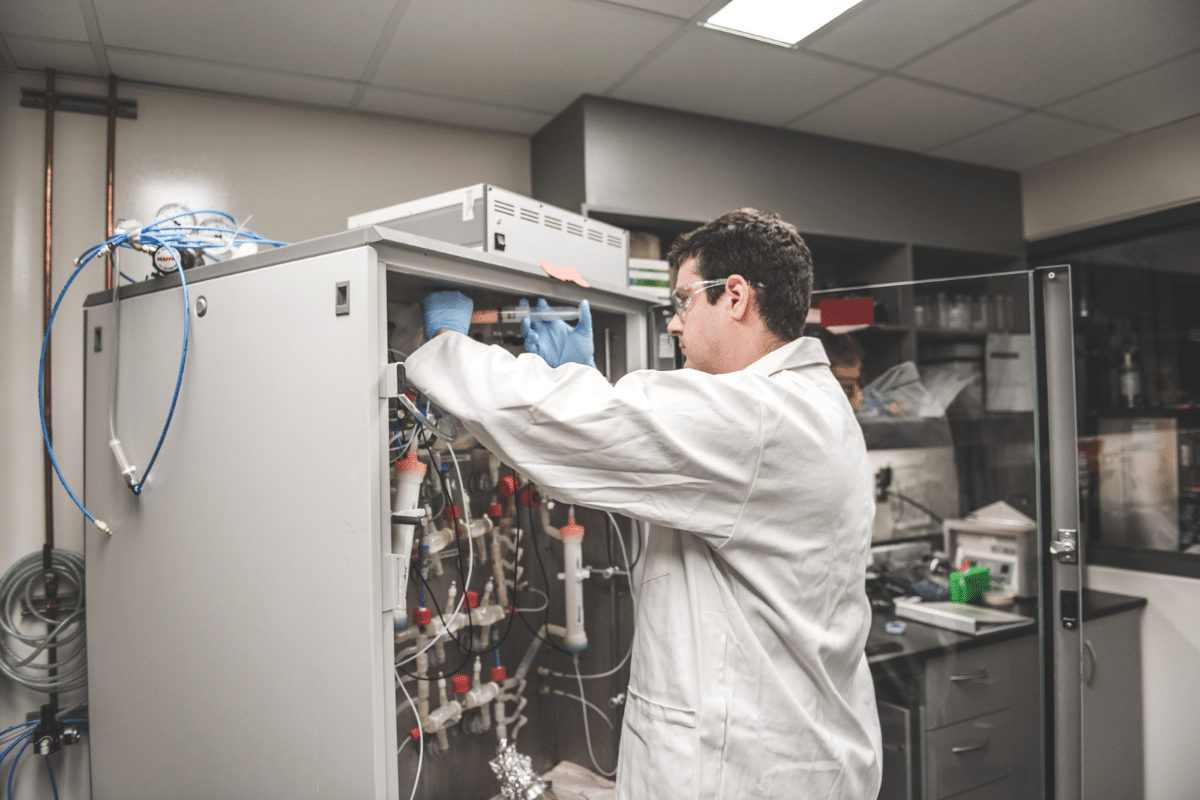
INAF houses the largest collection of in vitro digestion models in the Americas, providing five distinct digestion models to meet various industry needs. These models simulate the human digestive system from the stomach to the intestines, enabling a quasi-perfect representation of digestion processes. Through this simulation, researchers can assess the assimilation of molecules, test galenic formulas, evaluate pre- and probiotics, identify metabolites produced during digestion, and determine the impact of compounds on the intestinal microbiota. Since 2016, the platform has successfully executed approximately 40 large-scale projects and 10 industry-funded projects.
SURVIVAL AND IDENTIFICATION OF MICRO-ORGANISMS : ESSENTIAL DATA
In addition to the “in vitro digestion” element, the “microbial diversity” component aims to characterize and quantify the microbial communities present in various food products. Conventional microbiology tools and our genomic platform allow detailed characterization of fermented food’s microbial ecosystem, probiotic mixtures, or gut microbiota. Our unique service offers access to a diverse collection of lactic acid bacteria strains, with potential applications in formulating probiotic foods or supplements.
Services

Gastric and/or duodenal digestion for rapid screening of several molecules
- Release of nutrients contained in a matrix
- Stability and activity of biomolecules
- The survival rate of probiotics
- The release profile of encapsulated health ingredients
Gastrointestinal digestion using the dynamic simulation model (TIM) for near-real digestion of molecules
- Non-digestibility of a molecule
- Release of nutrients contained in a matrix
- Solubility and/or digestibility of molecules
- Level and speed of assimilation for health ingredients
- Stability and activity of biomolecules
- Survival rate of probiotics
- Release profile of encapsulated health ingredients
- Safety of new health ingredients
- Impact of an enzyme supplement on molecular assimilation
-
Simulation of the intestinal microbiota for rapid screening of several molecules over a 24-hour period with the static simulator system
- Determination of secondary compounds produced when a molecule is put in contact with an intestinal microbiota
- Evaluation of microbial metabolites production when a molecule or a bacterium is added
Simulation of the intestinal microbiota for screening of several molecules over a period of 1 to 4 days with the PolyFermS
- Impact of a molecule or a bacterium on the diversity in the luminal gut microbiota
- Evaluation of microbial metabolites production when a molecule or a bacterium is added in an environment simulating the large intestine
Simulation of a complete gastrointestinal tract for analyzing a repeated daily intake from 5 to 14 days with the M-SHIME
- Impact of a molecule on the diversity in the luminal gut microbiota, as well as that found in the mucin layer
- Evaluation of microbial metabolites production when a molecule is added in an environment simulating the large intestine
- Stability of biomolecules in various sections of the large intestine (ascending, transverse and descending colon)
Level 2 containment laboratory
- Use of our facilities (biological chambers, incubators) to handle animal or human feces or intestinal sections
Equipment

In vitro digestion model – TIM
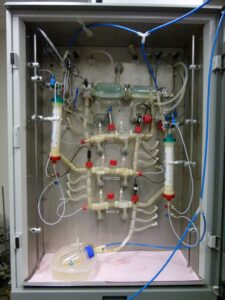
SHIME in vitro digestion model
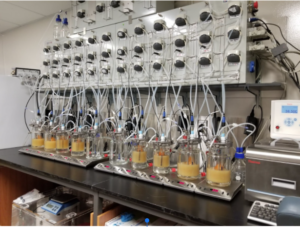
PolyFermS system
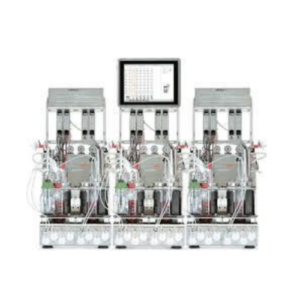
Anaérobic chamber

Benefits of Conducting a Preclinical Study with Us

Benefits of Conducting a Preclinical Study with Us
Benefits of using our services and doing preclinical studies with our in vitro digestion models
Experiments conducted by experts:
- No ethical constraints related to the experiments (compared to human and animal studies)
- Control of digestion parameters
- Easy sampling at various stages of digestion
- High reproducibility of results
- Reduced costs
Platform team:
METABOLOMICS PLATFORM
Identification of all biomolecules in a sample
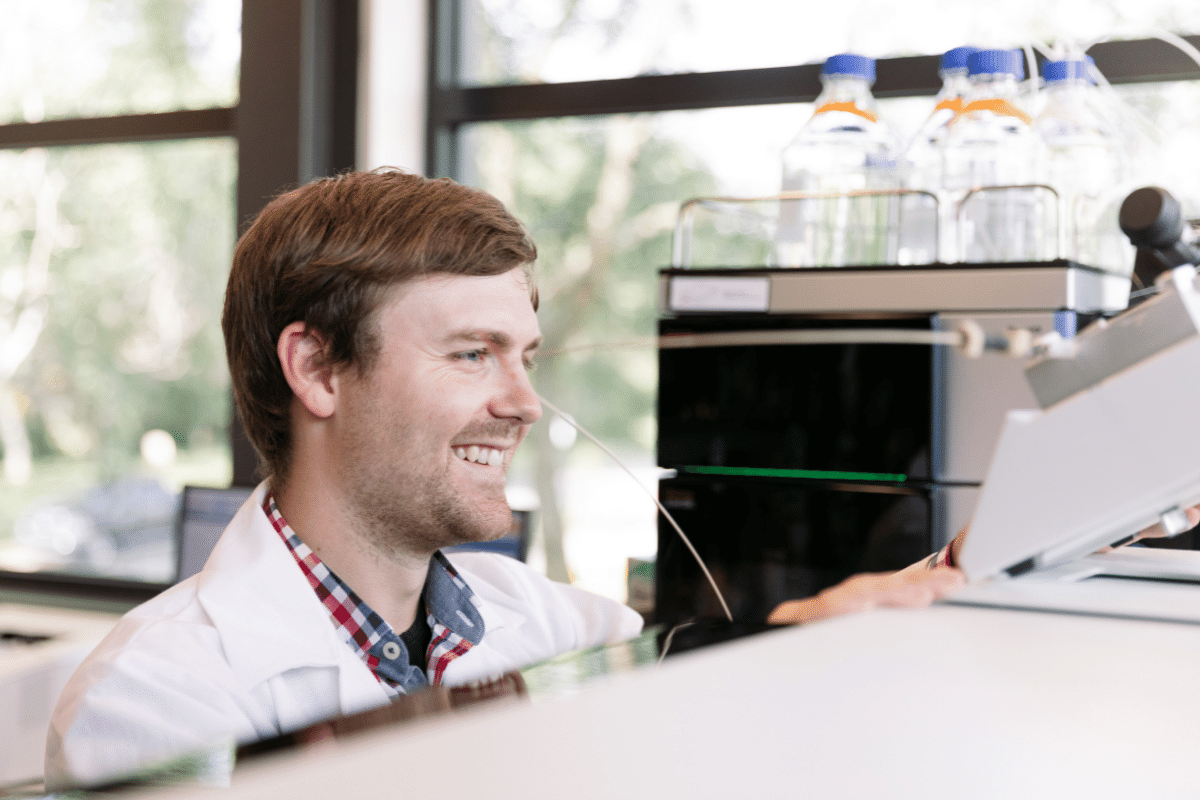
Our platform for metabolomics provides research teams and companies with targeted or non-targeted high-resolution mass spectrometry metabolomics analytical services in order to study the biological transformation processes of small molecules and to characterize complex samples.
Services

Semi-targeted and non-targeted analyses by UHPLC-MS :
- Comparison of human/animal subjects’ metabolic profile
- Characterization of extracts
- Research and identification of biomarkers
- Characterization and identification of purified metabolites
Support and training in data analysis (genomics, metagenomics and metabolomics)
Equipment

Ultra-high-performance liquid chromatograph – fluorescence detector (UHPLC-Fluo-Orbitrap)
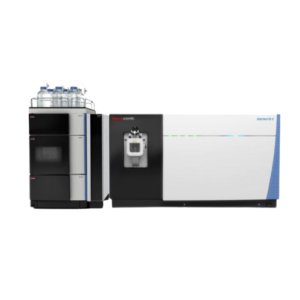
Ultra-high-performance liquid chromatograph – ion mobility spectrometer –UV detector (UHPLC-IMS-PDA-QToF)
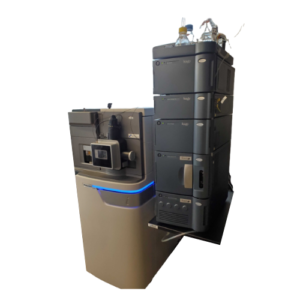
Platform managers :
Nutritional clinical studies platform
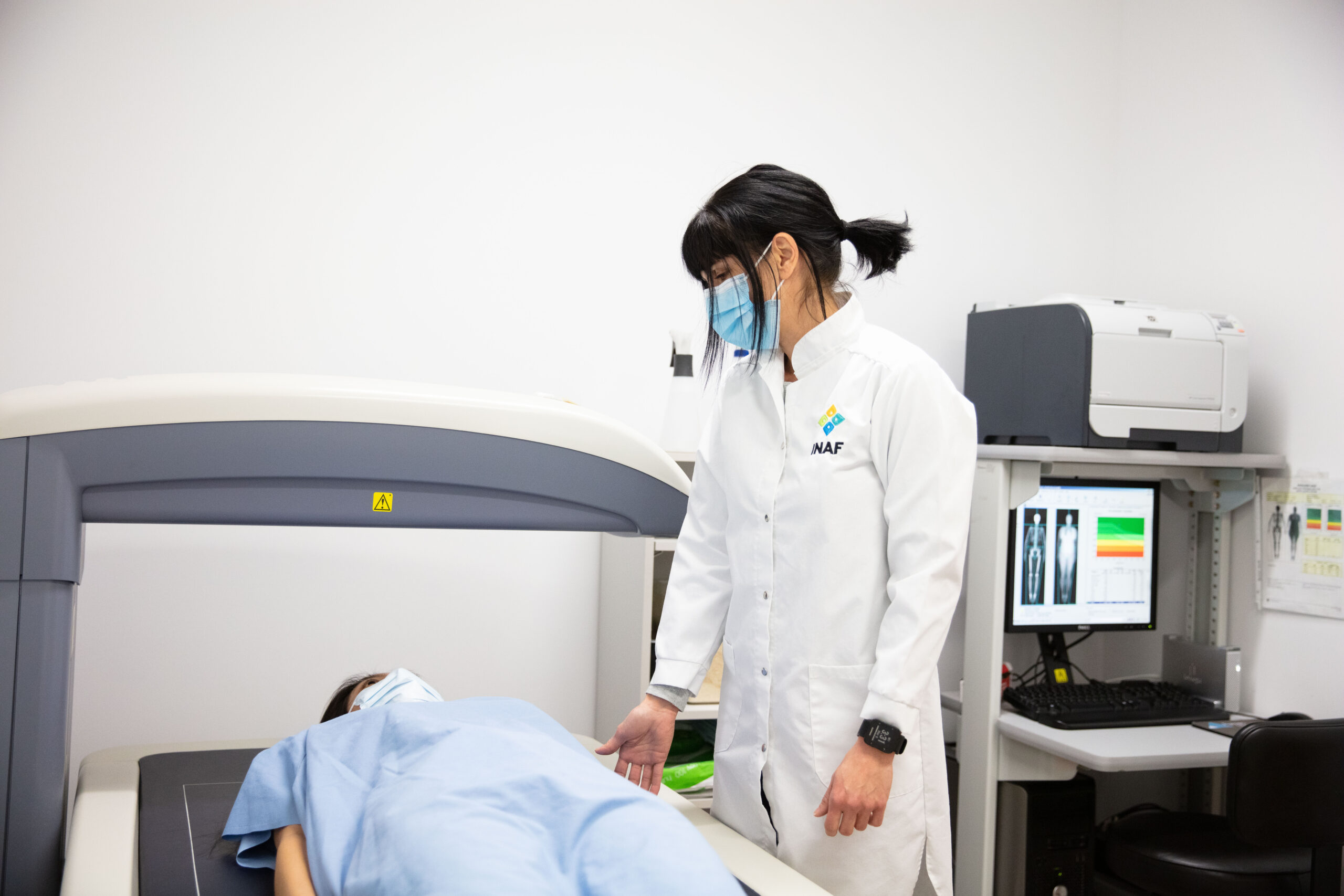
Nutritional clinical studies platform is the largest unit of nutrition clinical studies in Canada. It is recognized both from internationally.
The Nutritional Clinical Studies Platform boasts a unique infrastructure, including a Clinical Investigation Unit, state-of-the-art equipment and highly qualified human resources, enabling all stages of a human nutritional research project to be carried out. Our current facilities also enable us to carry out several research projects simultaneously, including multicentre projects involving the participation of several research centers in Canada and abroad. To date, researchers at the Clinical Nutritional Studies platform have collaborated on more than a dozen such projects with research teams in Canada, the United States and France.
The projects are aimed at a wide range of people of all ages, mostly from the Greater Quebec City area, with or without health problems related to overweight or obesity, such as diabetes, hypercholesterolemia, hypertension, inflammatory arthritis and age-related cognitive disorders. The unique mentoring provided by research staff of the nutritional clinical studies platform (researchers, physicians, research professionals, nutritionists and research nurses), coupled with the expertise of our team of scientists and researchers, will enable us to offer a unique and innovative approach to the study of obesity. The unique supervision offered by the research staff (researchers, physicians, research professionals, nutritionists and research nurses), combined with the many advantages of participating in the nutritional clinical studies platform research projects (health check-up, nutritional assessment and personalized advice, free food, complete meals or supplements in certain projects, participation in group workshops or personalized meetings, medical referral if needed, financial compensation for certain projects), mean that many volunteers decide to take part in more than one research project at the nutritional clinical studies platform.
Since its inauguration in 2003, over 130 projects involving more than 12,000 participants have been carried out at the nutritional clinical studies platform, including 40 partially or totally controlled nutritional intervention projects (food or meals partially or entirely provided to participants). The cost of food for all these projects totalled over $1,000,000.
Areas of Interest of nutritional clinical studies platform Research Members

The nutritional clinical studies platform brings together some fifteen researchers from our Institute. Their main areas of interest are :
- Cardiovascular diseases
- Diabetes
- Obesity
- Eating habits and weight management
- Eating disorders
- Brain health (cognition, brain aging, etc.)
- Microbiome and digestive health
- Immunity and inflammation
- Nutrition and pregnancy
- Personalized sports nutrition
INAF’S CULINARY COMPLEX
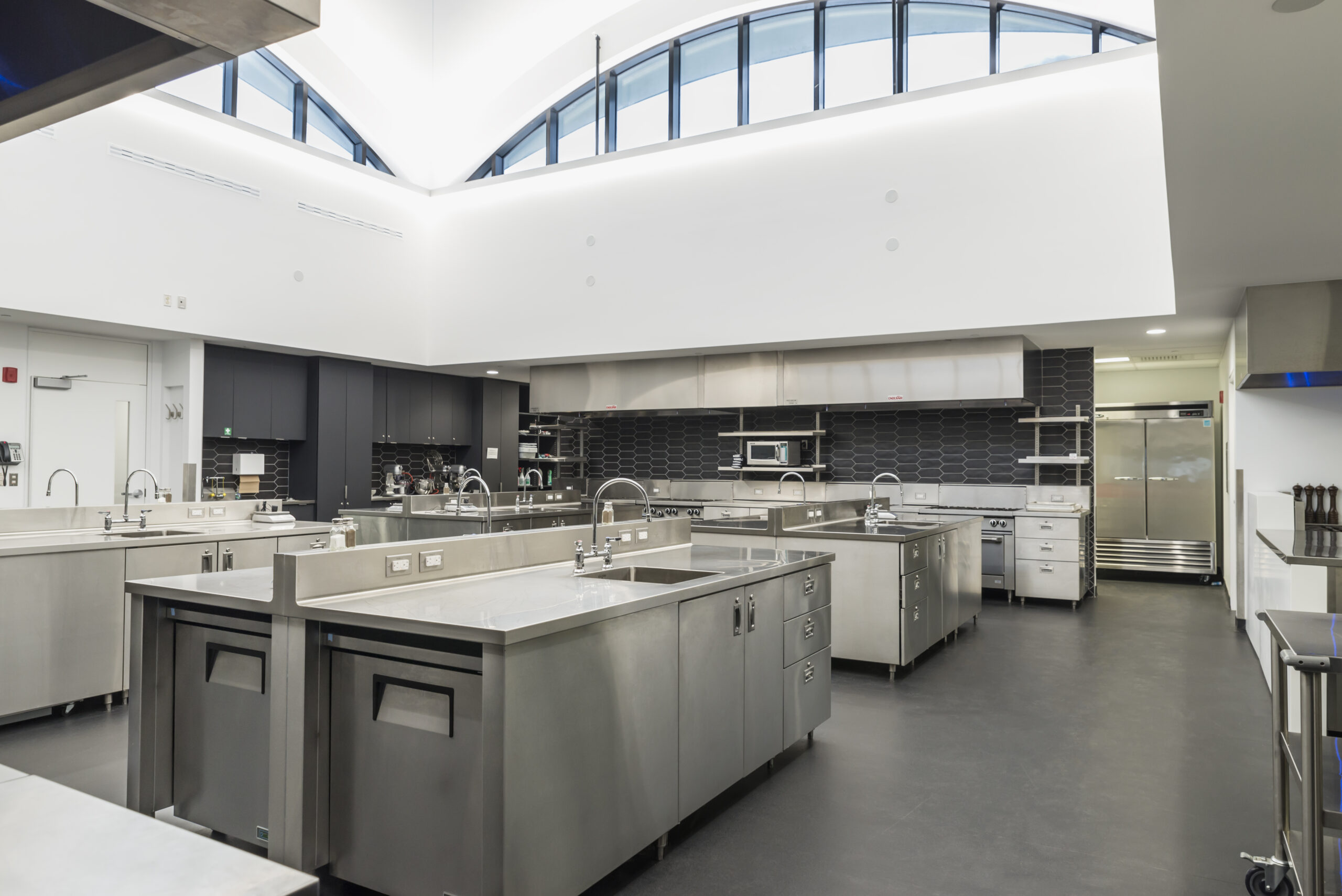
Since April 2018, INAF has had a new transdisciplinary research infrastructure, which includes a Culinary Complex featuring professional-level spaces as described below.
This state-of-the-art facility enables the integration of culinary, behavioral, nutritional, health, and consumer sciences in our research work.
Visit our culinary complex !
Click here to see the video
Kitchen Workshop

A kitchen laboratory with a demonstration island and eight independent islands accommodating 16 to 24 users (adults and children)
What is the purpose of INAF’s kitchen workshop?
- To conduct research aimed at studying food as a vehicle for taste and health, ultimately leading to the development of both healthy and delicious products for consumers through retail markets and institutional feeders.
- To facilitate the creation of innovative new products that cater to consumer needs. This involves culinary co-creation activities that bring together head cooks, experts in food sciences and technology, nutritionists, industrialists, and consumers/users.
- To engage in research work demonstrating and implementing the principles of healthy eating. This includes studying the factors that influence food choices and developing intervention programs that promote the adoption of healthy eating habits, including culinary skills.
- To offer, through INAF’s Aliment’Terre program, culinary workshops to clients of all ages, with different problems or special needs, in order to promote the development of food knowledge and culinary skills.
- To host young participants from INAF’s summer camps, such as Camp Aliment’Terre (for 10-12-year-olds) and Camp Jeunes Foodies (for 13-15-year-olds). These camps provide an opportunity for young individuals to explore the world of food, understand its journey from the earth to the table, and experience the joy of cooking while nurturing their creativity.
Available equipment:
- 8 “Garland” commercial gas ranges
- 2 “Garland” gas salamanders
- A “RATIONAL” combination oven (“combi” oven)
- A “SIPROMAC” vacuum-packing machine
- 4 “Polyscience” thermocirculators
- 4 Thermomix
- Under counter refrigerators at each island
- An ice machine
- A cold room at 4C
- A “walk-in” pantry
- A “Hobart” commercial dishwasher
- Small kitchen equipment, crockery and accessories
Dining Room

A 24-seat room adjacent to the kitchen workshop and potentially set up in different ways to meet the needs of users:
- Dining room for groups/users of the kitchen workshop
- Ideation and creation room
- Focus group room
- Observation/consumption room for the study of eating behaviours
- Education and information room for the general public (culinary sciences, gastronomy, healthy eating habits)
Adjacent “bar” area connected to the dining room.
Laboratory

This laboratory is equipped with cutting-edge analytical instruments used to quantify the key attributes influencing the sensory perception of foods, including texture, appearance, and taste.
What is the purpose of the laboratory?
- To carry out innovative work in food chemistry and rheology, exploring the multiple impacts of food composition and structure on sensory response and nutritional properties. This approach considers food as a “vehicle” for taste and health molecules, with a focus on dairy products, beverages, bakery products, and other food items.
- To conduct research work on the impact of processes for food preparation under industrial and non-industrial conditions, assessing their effects on organoleptic qualities and preserving the bioavailability of bioactive ingredients beneficial to health.
- To study the influence of specific culinary trends, such as vacuum cooking and the use of industrial ingredients (gel-forming substances, aromatic extracts, etc.), on the nutritional and sensory properties of foods developed by professional chefs.
Available equipment:
- Electronic eye (IRIS VA 400 Visual analyzer, Alpha MOS)
- Texturometer (XT plusC Texture Analyzer650H, Texture Technologies)
- Viscometer/rheometer (MCR 92 Modular Compact Rheometer, Anton Paar)
- Dispersion analyzer (LUMiFuge, LUM Corp.)
- Precision balance (Sartorius Entris II, 3200 g ×10 mg)
- pH meter (Orion Star A211 Benchtop pH meter)
- Induction cooktop (Mirage, 1440 W, Vollrath)
Lounge space

A welcoming and cozy space designed to facilitate interaction and comfort for users of the kitchen workshop and dining room. It provides an inviting environment for exchanging ideas, reading documentation, consulting resources, or conducting computer work. Located on the second floor of the complex, this area is conveniently connected to the dining room, making it easily accessible for all.
Multifunctional Space

This room with podiums and cushions has tables on wheels and stackable chairs. It can easily be set up in different ways to meet the needs of users:
- Ideation and creation room
- Focus group room
- Conference/meeting/workshop room
Who can use the facilities of the culinary complex :
- INAF researcher members/INAF associate researcher members
- External collaborators (researchers from various academic disciplines and from academic and governmental organizations
- Industrialists
- HRI (restaurateurs, hoteliers, institutions and other actors in the restaurant industry [private and public sectors])
- Head cooks, “foodies”
- General public (knowledge transfer activities)
PARTNER INSTITUTIONS
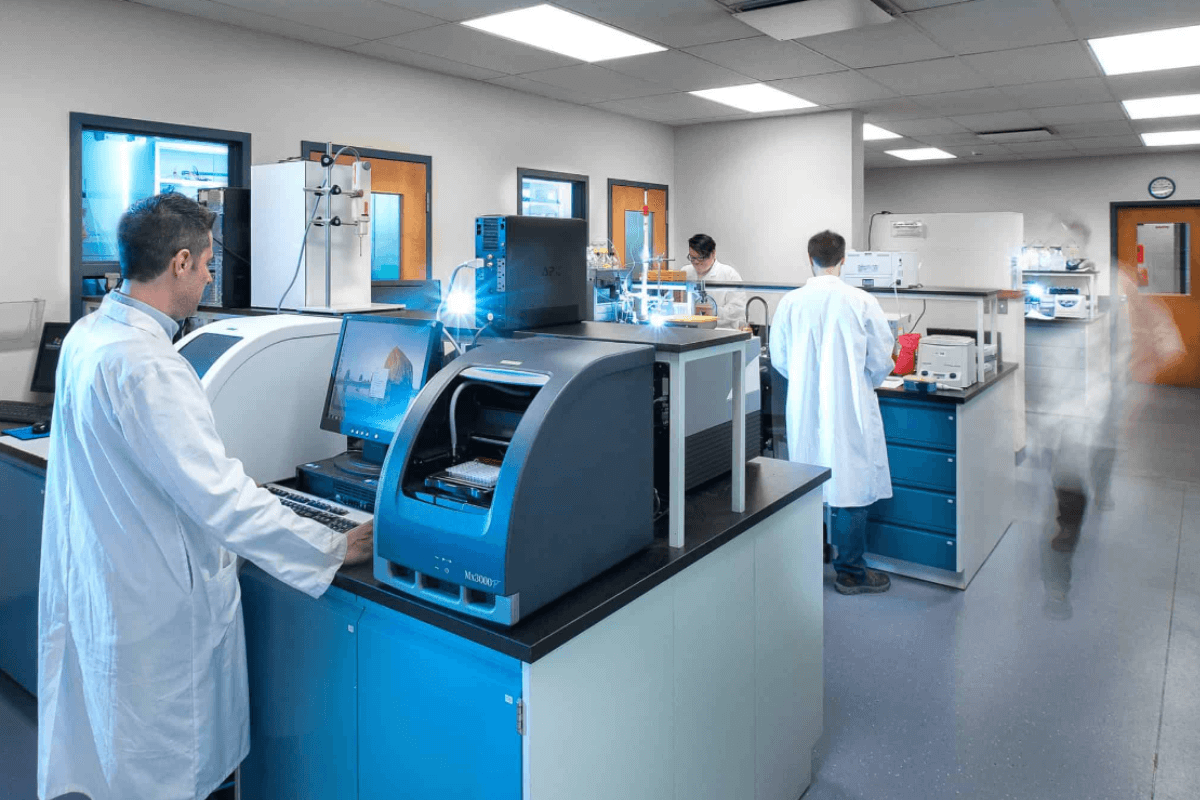
INAF’s members are composed of researchers from 15 institutions in Quebec. These partner institutions have complementary platforms and equipment to help support the research. A support program for the use of these platforms is also available.
Université de Sherbrooke

A few examples of their expertise:
- Chemical analysis of biomass and biocommodities
- Analysis of sugars and anions by ion chromatography
- Determination of the calorific value
- Elemental analyses (determination of the concentration of carbon, hydrogen, nitrogen, sulfur and oxygen)
- Inorganic analyses by ICP-MS and XRF
- Thermogravimetric analysis
- Proximate and Ultimate Analysis
- Chromatography (HPLC, GC,) and coupling with mass spectrometry
- UV-Visible, FTIR, NIR
- Water content analysis (Karl-Fischer)
- Cryogenic grinding
- Extraction of secondary metabolites by ASE (Automated solvent extraction)
- Development of new analytical methods
- Analytical technologies applied to processes (including prediction models)
Some examples of applications : maple syrup, cannabis, pharmaceuticals, biochar.
Website : link
Contact : Thierry Ghislain
Institut de recherche national scientifique (INRS)

Platform for characterization of biological or synthetic nano-vehicles
A few examples of their expertise:
- Analysis of free radicals
- Characterization of nanoparticles
- Isolation and characterization of exosomes
Application examples: antioxidants
Website: link
Contact : Charles Ramassamy
Université McGill

Mass spectrometry platform
A few examples of their expertise:
- Identification and quantification of compounds (volatile or labile) in food science, food safety, environmental and food contaminant analysis.
- Targeted screening and quantification in metabolism and clinical analysis.
Some examples of application: maple syrup, honey, fish.
Web site : link
Contacts : Salwa Karboune and Stephen Bayen
Molecular and Cellular Microscopy Platform (MCMP)
A few examples of their expertise:
- Fluorescence microscopy experiments
- Image analysis
Web site : link
Contacts : Salwa Karboune and Stephen Bayen
Food Development Laboratory
A few examples of their expertise:
- Prototype development
- Textural improvement
- Sensory evaluation
- Shelf-life testing
- Microbiology
Website : link
Contact : Salwa Karboune
McGill Nanotools MicroFab
A few examples of their expertise:
- Micro and nano fabrication
- Packaging
Some examples of application: Natural polymers (cellulose, proteins, starch, chitin and chitosan)
Website : link
Contact : Yixiang Wang
Food nutrition laboratories
A few examples of their expertise:
- Food production and product development
- Sensory Evaluation Laboratory
Website : link
Contact : Daiva Nielsen
Mary Emily Clinical Nutrition Research Unit (MECNRU)
A few examples of their expertise:
- Anthropometry
- Body Composition and Bone Analysis
- Survey and Questionnaire Administration
- Controlled Feeding Trials
Website : link
Contact : Daiva Nielsen
MERINOV

Some examples of equipment:
- Fractionation center (grinding, extraction and hydrolysis, clarification and purification, sieving and filtration, dehydration, supercritical fluid extraction)
- Analytical chemistry laboratory (atomic absorption, liquid and gas chromatography)
- Food and environmental microbiology laboratory
- Equipment and personnel specialized in seawater sampling
- Fish ponds, hatchery and quarantine unit
- Food development laboratory (autoclave, climatic test chamber, pressure cooker, cooker, extruder)
- Seaweed processing platform
- Experimental kitchen
- Sensory evaluation panel
- Experimental mariculture and algaculture sites and mariculture boats in Gaspésie and the Magdalen Islands
- Experimental holding tanks
- Shellfish ecophysiology laboratory
- Technological showcase for livewells (mobile unit for prolonged shellfish holding)
- Multipurpose fishing vessel
- Panoramic thermal camera and drone equipped with thermal sensors for environmental monitoring (marine mammals and others)
- Underwater cameras
- Tension sensors in cables and ropes and various physico-chemical data probes
Some examples of application:
- Compositional analysis of algae and marine products
- Certification of shellfish waters under the Canadian Shellfish Sanitation Program (ISO/IEC 17025 accredited method)
- Analysis of free or total amino acids
- Environmental monitoring
- Acoustic and thermal detection of marine mammals
- Mechanization of transformation processes and design of marine product processing lines
- Valorization of transformation co-products
- Lobster hemolymph sampling and analysis
Website : link
Presentation : PDF
Contact : Jérémie Hamel, professionnel de recherche
TransBIOTech

Some examples of expertise :
- Biochemistry (protein expression and purification)
- Cell biology (anti-inflammatory, immunomodulatory, antioxidant activity
- ADME (permeability tests)
- Toxicology
- Animal models
- Pharmacokinetics
- Bioanalysis of products
Some examples of application : amino acids, fatty acids, caffeine, cannabinoids.
Website : link
Presentation : PDF
Contact : Édouard Lauzier, Directeur – partenariat & développement des affaires

